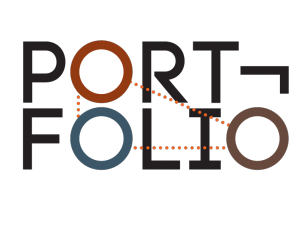You may have a personal portfolio website for a number of reasons. If you’re a freelancer, then you’d need one to showcase your work and allow people to contact you. If you’re a student (or unemployed), then you’d need one to show prospective employers how good you are and what you can do, so that they might hire you. If you’re part of a studio, then you might use one to blog about your design life, show people what you’re doing and build your online presence.
- Immediacy of information
- Easy to access and distribute
- Easy to update/cost effective
- Easy to customize
- Interactive, enables feedback. Don’t make users register to add a comment to your blog
- Easier for visitors to sort information using tags and keywords
- Visitors can subscribe to an RSS feed to follow your most popular blog posts.
document
& Edit
- SCAN from Photoshop: File>import>images from device
- TABLETOP Photographs for 3D pieces, play with compositions, create dimension.
- VIDEOS to showcase design process
- PHOTOSHOP to clean up/edit pieces
Reflective Practice:
Analyze, Curate, Write
Make a distinction between yourself and the work, and then centering the conversation only on the work. “It’s a bit of a mind game, but start by avoiding the word ‘I,’” Ilise Benun, author of Stop Pushing Me Around: A Workplace Guide for the Timid, Shy and Less Assertive, suggests. “Instead, start your sentences with ‘my clients’ or ‘my projects,’ and then focus on what you did and the results it generated.”
Ask yourself the following questions about each piece of work:
- How relevant is this piece to the prospective employer’s needs?
- What was the project objective, and how did this piece solve it?
- How were the results measured? Is there any quantifiable data I can share?
- Are there any aspects of this project that make it especially memorable or interesting?
**See more at: HowDesign.com/How to Present Your Creative Portfolio
Elements of the Learning Portfolio
Layout
Use clean layout, and readable type. A color palette that neither vibrates on screen, nor competes with your pieces. Simplicity is key; let the work take centerstage.
Logo: name or mark
Tagline: Describes your overall skills; e.g. “Loves fashion photography and video editing.”
Portfolio: 10 strong pieces tops! Divided in categories or as one whole. These could be defined by media (drawings, paintings, photography); by skills (print design, film, web), by project (from concept development to final product),It is important that you curate your portfolio: Always showcase the type of work you want to be doing in the future.Use eye-catching images, and share the backstory. Share sketches to showcase your thinking process
Include a short description for each project: project brief/task, skills/tools/techniques/media used, and how you approached, and resolved, the project. This description should not be more than 3 to 4 lines.
About me: Don’t be afraid to show off your awards and recognition here. You want people to know that you are good at what you do; this is your place to shine. Craft a bio that expresses your unique process and/or point of view because having a strong point of view will make you stand out from the crowd. For instance, share the backstory of how you developed your point of view: Did you have an experience as a kid or early in your career that lead you to pursue a passion or shaped your creative direction?Also, think notable projects, press, or publications. Be approachable. Round your story out with some personal trivia. Have any hobbies or interests you obsess about? Revealing some guilty pleasures keeps your bio approachable and relatable.
Contact: No need to share your phone number and address, an email address will suffice. Always avoid an email address such as babylove124@hotmail.com. Keep it professional!
Skills: Make it clear, and break it down: Web design, development, video, copy-writing, branding, etc. You may want to be even more specific: corporate branding, church website design, Flash banner ads and so on. This section can be in your homepage and should also be displayed on the landing page of your portfolio section.
Web-Layout Examples:
sarahlongnecker.com
toby-powell.co.uk
andrewbradshaw.com
shannonmoeller.com
http://vlourenco.com
Social network
to increase sharing/traffic:
Make the most of social networks; encourage people to follow you on other websites. Make it clear that they can follow you on Twitter, Facebook, Flickr, LinkedIn, etc. and have a group of friends to call on if needed. Also, add a QR code that links to other websites or blogs that you own. QR codes are also a good idea for business cards and promotional materials.
Objectives
- Examine skill building and performance
- Foster a reflective practice on personal work
- Document process and final outcomes
- Facilitate sharing work with others/become part of a community
- Provide space to receive feedback from faculty and peers
- Platform to share stories about personal growth and experiences in the program, both inside and outside of the classroom


Hey I’m guest blogger and I’m Ressellar I will guest post on your site please send me your price details I’m a student i hope you will give me discount able price. thanks